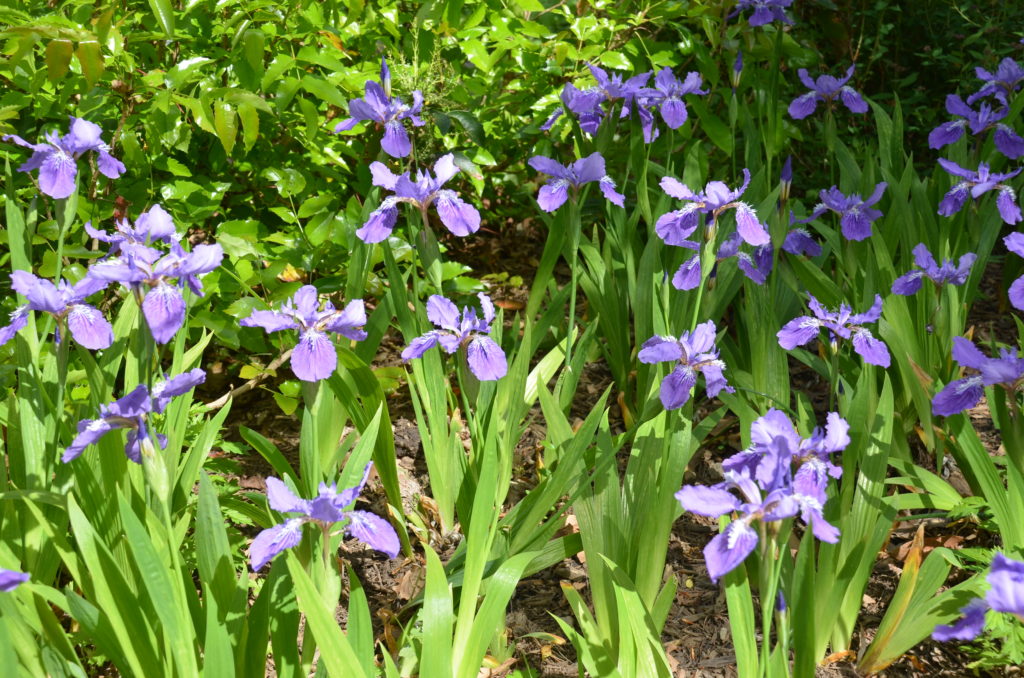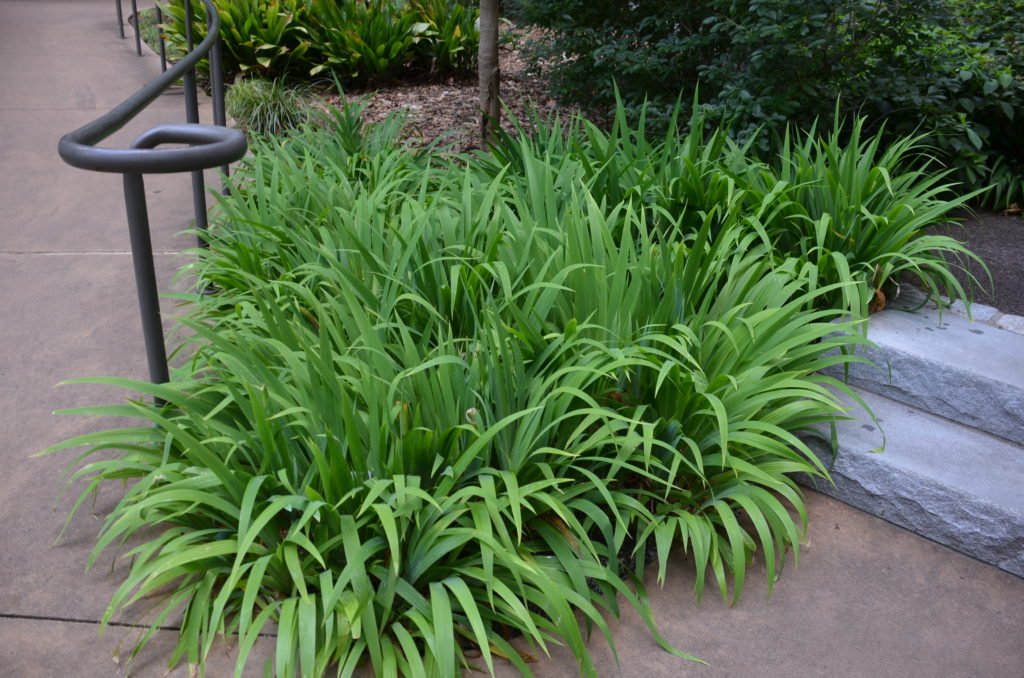
Roof iris (Iris tectorum) is indigenous to China. This beardless iris is part of the crested iris group. Leaves stand 15 inches tall, fanned at the base and are ribbed. The clean green fan-like leaves remain mostly blemish-free most of the growing season. Plants give rise to purple-blue flowers with white and darker purple flecks starting in late April (in Tennessee) and and remain showy for 2-3 weeks in May (USDA hardiness zones 4-9).
Roof irises are very adaptable and sturdy plant that prefer a partial sunny to part-shade site. In northern gardens plants may tolerate direct sunlight, and a lot less, only 2-4 hours in the South and preferably just morning sun. Roof irises grow in a humus-rich, well-drained soil. They are low constant feeders; simply a dressing of compost or aged manure in fall; or a bit of low nitrogen (5-10-10) fertilizer in spring; or a slow release organic fertilizer.
Roof irises may be grown in wet soils, such as around ponds and fountains. They can be used in rock gardens, but may need occasional watering over extended dry periods. After many years the rhizomes will spread and the roof iris naturalizing. Historically, “Roof Iris” were utilized for thatched roofs in its native China.
Roof iris are susceptible to slugs and viruses. The latter pests cause leaf yellowing and streaking and may lead to a general decline of a clump. If this occurs, remove and destroy the plants. Roof irises are deer tolerant.

Cultivars: ‘Woolong’ is a popular clone from Woolong in Sichuan, China; fan-like leaves reach 15 – 20 inches tall and 2 -3 feet wide clumps with lavender blooms with purple flecks in May. ‘Slippery Slope’ forms tight-clustering 30 inches wide large clump with 2 feet tall blue-purple floral spikes; falls with a lovely white eyezone etched with purple line. ‘Alba’ produces frilly white flowers above the foliage. All three are sold by Plant Delights Nursery, Raleigh, NC.

 Posted in
Posted in 
